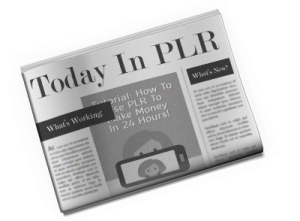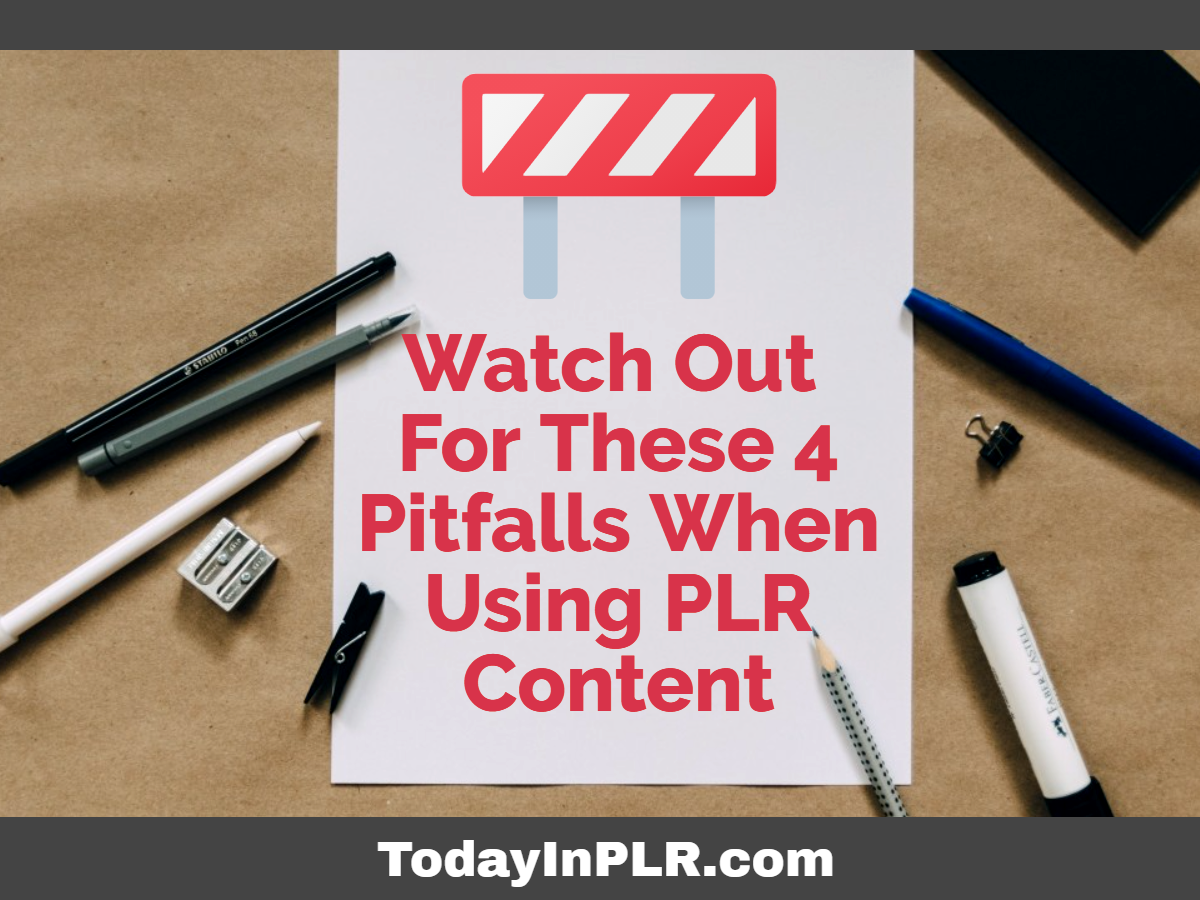Private label rights (PLR) content can be a lifesaver when you are short on time or you hate writing with a passion. Done-for-you content can be used on your blogs or you can bundle them and sell them as your own products or about 1000's other ways.
If you’re a beginner to online marketing, PLR can shortcut your journey and have you establishing a web presence and making sales in record time.
While PLR is a means to an end, it’s not an end in itself and has its downsides and limitations.
The 4 pointers below will help you steer clear of the pitfalls of using PLR.
1. Fact Checking

Here’s a brutal truth… not all PLR is made equal… and NOT all PLR vendors are reputable.
There are two types of PLR vendors.
The first type, are not just marketers, but are writers at heart. These PLR vendors do their own research and write almost all of their PLR. So, you can expect consistent quality and a uniform ‘voice’ throughout their content.
They tend to take a lot of pride in their work and it’s usually safe to purchase PLR from these vendors.
At the other end of the spectrum are PLR vendors who are ONLY in the business for money. (Not to say there's anything wrong with them taking this route.) They outsource the writing to cheap writers on freelance sites. The content is then cobbled together, given a pretty sales page and sold as the next best thing since sliced bread.
Here's what you need to know: Freelancers are on the clock. The more they write and the more gigs they accept, the more money they make.
This immediately puts a constraint on their time. Guess where they cut corners on?
If you said research, you’re absolutely right. When a cheap freelance writer is tasked to write content, most of the time they just get online and pull facts from different websites and create a Frankenarticle.
The problem here is that you never really know if the facts are accurate. There’s so much misinformation online that ‘fake news’ has become the norm.
You may wonder, “Why doesn’t the PLR seller hire better writers?”
The answer is simple. Better writers cost more and this eats into the profit margins. So, they go for the cheap ones.
If you’re in the health niche and you’re using PLR content, it’s especially important to cross-check all facts and stats you find in your PLR articles/eBooks. You don’t want to be dishing out inaccurate information.
The goal is to be an authority in your niche, and not a disseminator of wrong information. Always fact check your content. Period.
2. Plagiarism
 Another common practice by third-rate freelancers is to just rip off content from different sites and squash them together to form their own article. Once again, the writers are either hard-pressed for time or they’re just lazy and looking for shortcuts.
Another common practice by third-rate freelancers is to just rip off content from different sites and squash them together to form their own article. Once again, the writers are either hard-pressed for time or they’re just lazy and looking for shortcuts.
Run your content through a site like Copyscape to see if your PLR content is plagiarized. Do note that since others may have used the same PLR as you, several results may show up.
This is not plagiarism! You’ll notice that their content is almost the same as your PLR content because they’ve used the same PLR.
What you should be looking for are sentences and paragraphs that show up oddly on sites where the rest of the content is totally different.
When you see such results, almost always, the writer has either plagiarized the content or is using a content scraping software to create the content.
3. The Duplicate Content Penalty Myth Or Fact? Both!
 A duplicate content penalty occurs when you’re not organized with your PLR content. There are so many misconceptions about this penalty.
A duplicate content penalty occurs when you’re not organized with your PLR content. There are so many misconceptions about this penalty.
Let’s keep things simple. Using private label rights content will NOT get you penalized by Google. It doesn’t work that way. If it did, all syndicated news sites, etc. would get penalized for using the same content.
You ONLY get penalized by Google for duplicate content when several of your blog posts contain the exact same content. Google thinks you’re trying to game the system and rank your site higher.
For example, if you take a specific PLR article that you have, come up with 3 catchy titles for the article and post the same article 3 times on your blog, now you have duplicate content.
You’re only changing the title of the article but the rest of the content is the same. Some marketers do this intentionally thinking they’ll get away with it (they won’t) and others accidentally make a mistake because they’re disorganized and don’t know which PLR content they’ve already used and which they haven’t.
So, keep a separate folder for content that you’ve already used on your sites. This will prevent you from being hit with the duplicate content penalty.
4. Adhering To The PLR License
 So many PLR buyers just can’t seem to understand the license terms that come with the PLR packages they purchase.
So many PLR buyers just can’t seem to understand the license terms that come with the PLR packages they purchase.
While the terms state that you can sell the content as your own, you can’t actually sell it as your own PLR.
It’s easy to get confused here.
What the terms really mean is that you’ll need to convert the PLR into a final product, personalize it and sell it as a unique product to end consumers.
You can’t sell it as your own PLR content (you only can if they say you can) because that’s the original vendor’s job. Be clear about the license terms when using your PLR so that you don’t step on anyone’s toes.
If in doubt, always seek clarification from the vendor.
Keep these 4 points in mind whenever you purchase or use PLR. It’s best to err on the side of caution, and to always use the rule… If in doubt… ASK! It only takes a few minutes to shoot a message to the person you bought the PLR from and ask if what you want to do with their content is ok.
 Okay, so hopefully all of this has helped you on your PLR journey. If you'd like to learn more about PLR and/or get updates when brand new HIGH QUALITY private label rights content is available from my trusted sources make sure you're subscribed to the Today In PLR Newsletter at http://www.TodayInPLR.com
Okay, so hopefully all of this has helped you on your PLR journey. If you'd like to learn more about PLR and/or get updates when brand new HIGH QUALITY private label rights content is available from my trusted sources make sure you're subscribed to the Today In PLR Newsletter at http://www.TodayInPLR.com

David W Shoup
I had no idea that people did not know that they couldn’t sell PLR rights unless specifically told they can. I just always assumed, unless the sales page said differently that I could not.